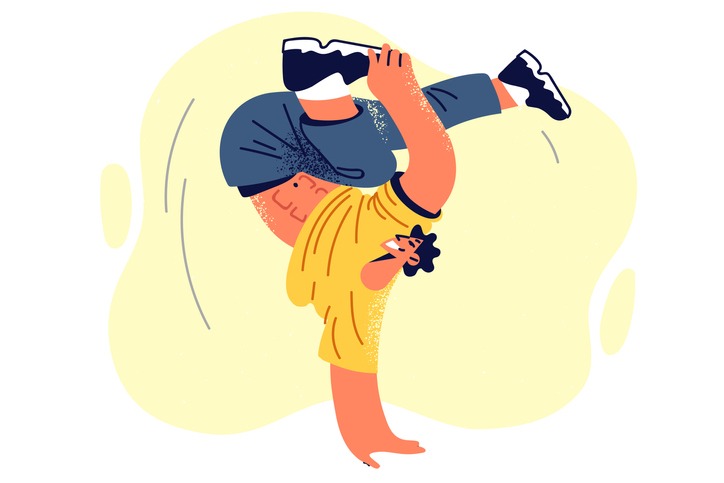
Fun could be your new form of healthcare – discover the physical and mental wellbeing benefits of embracing your inner child
CREDIT: This is an edited version of an article that originally appeared on Happiful
Do you ever find yourself resisting those seemingly ‘silly’ and childlike urges? According to experts, participating in adult play goes beyond mere amusement – it can trigger alterations in the brain that contribute to enhancing our mental, emotional, and even physical well-being.
So, before you allow guilt to seep in for reorganising the refrigerator magnets or playfully sticking your tongue out at your young niece or nephew, let’s delve into the scientific rationale behind play and how it has the potential to revolutionise our emotional state and way of life.
What prompts us to lose our love for playfulness?
It’s hardly surprising that children seem to have the upper hand in the realm of happiness – as they frolic in the backyard with one finger exploring their nose and the other hand clutching a purloined tablespoon. So, where does this vibrant spirit begin to wane?
As per the insights of globally acclaimed therapist and author Marisa Peer, we never truly forget how to play, but society instils in us the notion that it becomes unsuitable after a certain age. Despite those impulses persisting, we become conditioned to suppress them and adopt a more cautious and “appropriate” demeanour.
“Human beings possess an innate drive to establish connections and avoid rejection, which makes them reluctant to engage in behaviours that might set them apart as different,” she explains.
“As a child transitions into their teenage years, they gradually reduce their engagement with toys, seeking inspiration from older peers to determine what’s considered cool. The pursuit of acceptance from their peers becomes so pivotal that they willingly relinquish beloved toys just to fit in.
“This tendency is reinforced by adults advising youngsters to ‘grow up,’ ‘stop being silly,’ or ‘act maturely,’ all of which contribute to the conviction that playing and embracing playfulness beyond a certain age is socially inappropriate.”
Marisa ardently champions the need to transcend societal discouragement toward play, making a concerted effort to infuse light-heartedness and laughter into daily life. She further comments, “In my capacity as a therapist and a trainer of therapists, I find laughter to be an incredibly beneficial tool. Encouraging people to embrace play has a significant role in promoting positive mental well-being.”
The gravity of playfulness
Yet, this isn’t merely a matter of jest. Experts posit that engaging in play can offer valuable support to individuals grappling with mental health issues such as depression and anxiety, and it might even provide assistance to those dealing with trauma.
Dr. Alison McClymont, a creative arts therapist, employs play as a therapeutic method for treating trauma in adults. She suggests that indulging playful instincts can guide the brain back to a state reminiscent of childhood, facilitating access to and resolution of deeply buried emotional issues.
She asserts, “Although this might strike some as unconventional or ‘eccentric,’ play-based therapies for adults have been subjected to empirical study. I’ve worked with individuals who’ve endured severe trauma and found their pathway to therapy through artistic expression or play.
“Underestimating the significance of play would be a mistake; I’ve applied it in treating severe trauma and even psychosis. Creative arts therapy is endorsed by UK NICE [National Institute for Health and Care Excellence] guidelines as an optimal therapeutic approach for conditions such as schizophrenia and ADHD.”
Dr. Audrey Tang, an authority on well-being and an author, adds that while play isn’t the exclusive route to improved mental health, it undoubtedly represents one avenue toward emotional well-being.
She elucidates, “I wouldn’t necessarily contend that play is the ultimate solution for addressing depression – given that the inclination for play diminishes when we’re feeling down. Nevertheless, it’s important to acknowledge that play takes various forms. If it offers you a means of escape or a reprieve from relentless rumination, it can indeed elevate your mood and motivation.
“Identify what brings you joy during the course of your day (including playful activities), and then assess whether it rejuvenates or relaxes you. When you’re grappling with low spirits, opt for an activity that revitalizes you; if you’re feeling anxious, choose something that soothes. Solving a sudoku puzzle could prove calming, while engaging in a sport might be invigorating,” Dr Tang explains.
Infusing playfulness into your life
As it turns out, there’s an array of play types that can be seamlessly integrated into daily existence. Here are five illustrative examples:
Physical play and movement
Ever considered a session of Zumba? Getting your body in motion through creative means constitutes a form of physical play that releases those mood-enhancing neurotransmitters.
Social play
Round up your comrades, share a few jests, and savour each other’s company – it’s an endeavour that contributes to your well-being!
Imaginative and pretend play
Have you ever caught yourself affecting a whimsical accent or indulging in impersonations? Do you enjoy fabricating stories? Feel at liberty to engage in light-hearted antics with your partner, kids, or friends.
Storytelling-narrative play
Similar to the above, this involves harnessing your imagination to craft something fanciful, allowing you a temporary reprieve from reality and sparking a positive emotional response.
Creative play
Retrieve that neglected guitar, retrieve those paintbrushes, or finally enrol in that writing workshop you’ve been discussing. Expressing your creativity is a form of play as well!
Marisa Peer encapsulates this concept by asserting, “When we embrace youthful behaviour such as laughter, giggling, playfulness, dancing, silliness, making funny faces, or adopting a playful tone of voice, we’re essentially emulating youthful conduct. With consistent practice, we may even begin to feel and even appear younger. Remember, your age shouldn’t be an inflexible constraint defined by your birth certificate.”


Be the first to comment